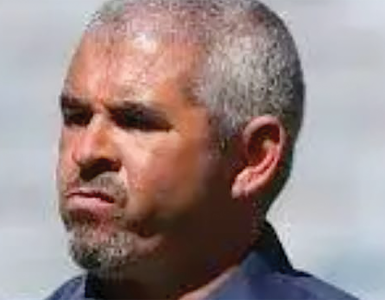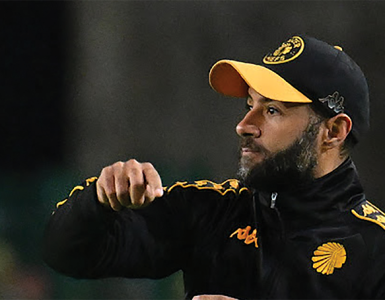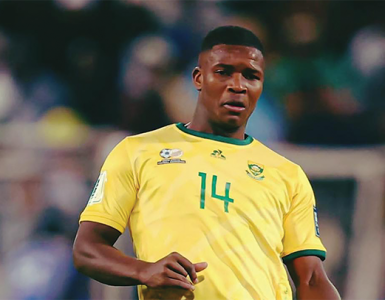CONVICTION: Lack of progress to women leadership in sports is driven by patriarchy…
By Jo-Mangaliso Mdhlela
The word Mbokodo, reflects emancipation of women from oppressive shackles of patriarchy, and should play a meaningful role in all leadership roles, including sports.
Etymological, and derived from isiZulu, the word expresses strength and resilience, as it also relates to the courage women expressed when they took up cudgels, and took it upon themselves in 1956 to challenge the oppressive apartheid system – marching with courage and conviction to seek their liberation at the Union Buildings, the citadel of apartheid power.
The rallying cry for the African women was, ‘wathinta abafazi, wathinta imbokodo’, which was to say “we are taking it upon ourselves as imbokodo or ‘the rock’ to emancipate ourselves from the shackles of pass laws – and on this path we are unshakeable.
A year after the county gained democracy and freedom from the apartheid rule of the National Party, the country’s women delegation attending the Beijing Conference in 1995, served as a pathfinder for justice and equality for all the women of the world.
This included our own country in which women had hitherto continued to be subservient to men, despite the onset of democracy and the new Constitution – a dispensation that prompts and agitates for equality for all humans, irrespective of their stations in life.
The outcomes of the conference were aimed at eliminating all barriers of discrimination, to be replaced by equal participation of women in public and private life, and elevating their human rights in all parts of the world – and this without leaving out sports from the equation.
The Beijing Platform of Action, with its comprehensive agenda for gender equality, sent back delegates to their respective countries to fight for gender equality, human rights, and the elimination of all barriers calculated at hindering women progress in all spheres of human endeavour, including sports – and this without apology.
The Beijing platform for Action sought to ensure that whatever plans and discussions should be implemented without fear of favour.
The delegates attending the conference were told that whatever words were used to agitate for change calculated to emancipate communities, should not turn out to be empty rhetoric, but should be words concretised by action.
In keeping with this demand by the Beijing Conference, the sports policy developed by the national department of sport, arts, and culture, recognising disparities that bedevil women in the country, states: “The full participation of women and girls in all aspects of life, forms the cornerstone of development and prosperity in South Africa.
“Gender inclusion that fosters gender equity is a core value of human justice in any society and by recognising that their marginalisation in many aspects of their lives, and in all sport-related sectors undermines the realisation of taking up their rightful place in society and in sport.
“This policy is therefore developed to address existing inequalities for girls and women in the South African sport ecosystem – particularly in participation, competition, coaching, officiating and leadership.”
The question is: Why, 30 years after the Beijing Conference, and 31 years after the country’s democracy in 1994, and nearly 70 years after the famous march by the women to the citadel of apartheid power in Pretoria in 1956, there is no discernible sign that patriarchy in sport leadership is on its way out?
Why do women, in the higher echelons of sports, continue to be conspicuous by their absence? Why are women’s inclusion in the management positions of all sporting codes, remain insignificant in their numbers? Why, in general terms, women remain marginalised in various sporting leadership codes?
The question of women marginalisation in sports leadership appears to be systemic, creating huge swathes of underrepresentation in almost every major sporting code one can think of.
This, in many ways, negates the spirit and purpose of the Beijing resolutions which, without ambiguity, have emphatically called for women empowerment and equity in all areas of human life, including sports in all its facets.
The lack of progress to proactively promote women leadership in sports is largely driven by historical patriarchy, which has become stubbornly entrenched in a society in which the country’s boardrooms, political parties, religious organisations, and economic structures, are unashamedly male-dominated.
The perennial struggles by former South African Football Association (Safa) vice-president Ria Ledwaba are well-documented, having relentlessly sought justice – without much success – in a male-dominated football entity that did everything in its power to stifle her ambitions to lead the organisation.
Many hurdles were put along her path, even as she raised important issues of malfeasance taking place in the association, her voice was muffled by the male-dominated organisation.
Relentlessly, the male-dominated association ganged against her, diminishing the points she raised as if they lacked substance and merit when in reality the opposite was true.
Her arguments were demonstrably sound, backed by evidence, and focused not on personalities, but more on gross misadministration and misuse of the association’s financial resources.
What eventually happened to her? She was marginalised. She was, to put her down, declared a persona no grata for challenging, among other things, the malfeasance taking place in her own organisation – a decision which was later rescinded.
If we turn to rugby, the pattern replicates itself. Man’s leadership dominates, even in women’s rugby association. The coach is a male as is the chief executive of the entity.
These patterns of male-dominance can be replicated in most sporting codes, be they cricket, tennis, among others.
Clearly, many in sports administration have not heard the promptings of the Beijing Conference of 1995.
The 2023 women in sport policy, adopted by the Department of Sport, Arts, and Culture two years ago, promises to be “a game changer” in promoting equity and justice for women, consistent with the demands of the Beijing Conference.
It seeks to aggressively address exclusion of women in leadership, and argues that the policy “must be underpinned by a strict monitoring mechanism to ensure that the equitable representation objectives are met.
Equally important, all sport federations are made aware of the policies, and why they have been developed in the first place – to ensure that in the race towards justice for all, women do not lag behind.
The department recognises that progress may be slow, but is committed that “deep-seated cultural norms, a lack of investment in women’s sports, and unequal access to resources continue to hinder women from achieving leadership positions, should be addressed and to become a priority”.
But the policies have something more challenging to answer: How do they address insufficient funding and investment in women’s sports?
The country’s sport federations have to come to the party to alleviate challenges related to poor representation of women in the top organisational structure, “because without such effort, the country will not make progress to address pervading inequalities” the Beijing Conference sought to address.
That the voice of the women must be amplified if a more inclusive and equal sporting landscape is to be created, is a reality that must be tackled with vigour and conviction.
The right thing is to commit governments and sport federations to tirelessly seek to promote women’s rights and gender equality in all human endeavours.
All hands should be on deck to dismantle patriarchal systems and create safe spaces for conversations and advocacy for gender equality in sport.
Trusted monitoring systems must be redeveloped. The government should leave no stone unturned to ensure that women are permitted to thrive in a safe environment without violence.
Sport bodies, society, government, and the police must work together, if equity for all humans is to be attained, if sports in the country is to thrive.































